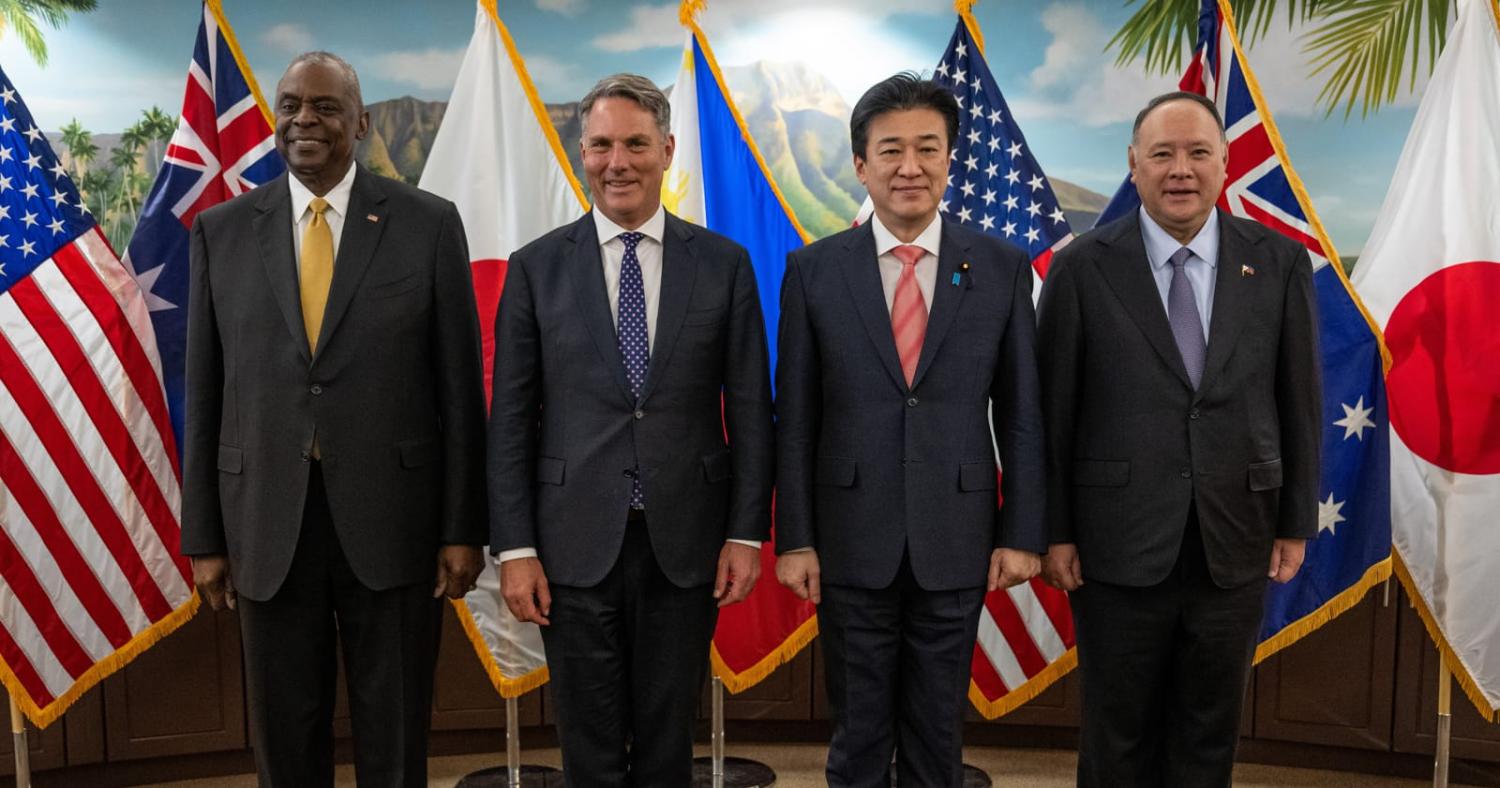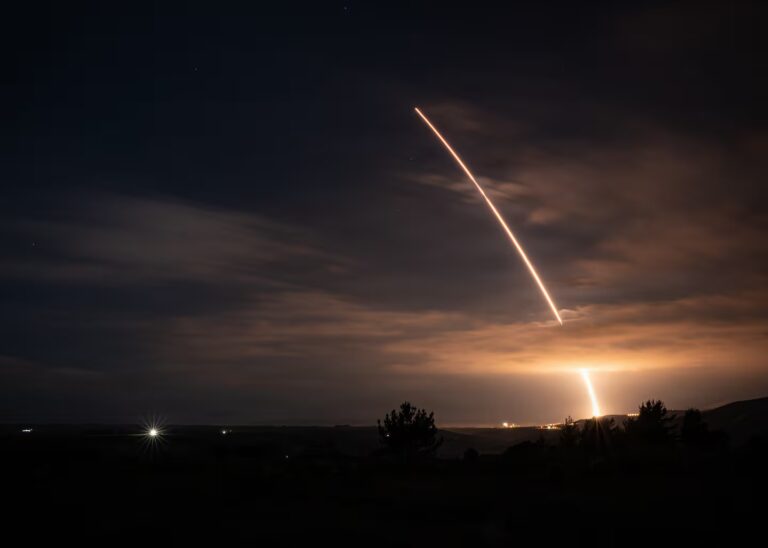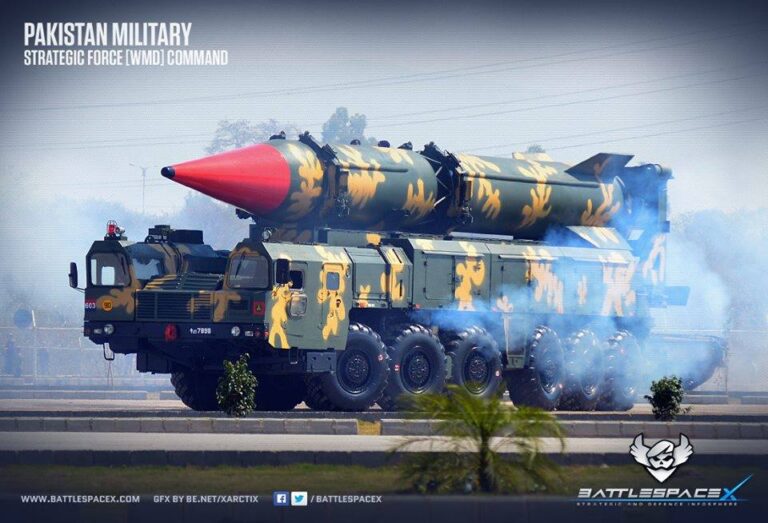
Source: Jack Sanders/LOWY Institute
Nidaa Shahid
The recent formation of the “Squad,” a new quadrilateral alliance involving the United States, Japan, Australia, and the Philippines, adds another layer to the security architecture in the Indo-Pacific. It focuses more sharply on traditional security concerns and countering China’s growing assertiveness in the East and South China Seas. This development marks a shift from the broader, non-traditional security focus of the already existing Quadrilateral Group, colloquially known as the Quad, which includes the U.S., Japan, Australia, and India.
The Squad was formalized in May 2024 during a meeting of the four countries’ Defence Ministers in Hawaii, following up on a previous gathering at the 2023 Shangri-La Dialogue. Its primary goal is to strengthen military cooperation among the four countries to address maritime security and enhance defence capabilities, particularly in response to Chinese activities in the region. Unlike the Quad, which has a more expansive agenda covering areas like climate change and infrastructure development, the Squad is designed as a hard power grouping focused on military preparedness.
A key distinguishing feature of this minilateral alliance is the inclusion of the Philippines, a U.S. ally, which has brought strategic, geographic advantages, especially through its proximity to the South China Sea and Taiwan. This alliance aims to counter China’s territorial claims and aggression in these waters, making it a critical player in the evolving security dynamics of the Indo-Pacific.
The two alliances are not competitive in nature. If anything, they play complementary roles in the broader Indo-Pacific Strategy. The Quad, at least on paper, focuses on a diverse set of issues such as economic cooperation, infrastructure development, supply chain resilience, and public goods. In contrast, the Squad is tilted towards improving military collaboration and defence capabilities, aligning countries that already have mutual defence treaties with the U.S., such as the Philippines and Japan. This makes it more of a traditional security alliance as it focuses on deterrence and joint maritime patrols, most recently conducted within the Philippines’ exclusive economic zone.
China views this development as the latest in a series of U.S. incursions in the Indo-Pacific, which uses the current state of heightened tensions between Manila and Beijing as an excuse. According to a Chinese Military expert, this is a U.S. attempt to rally its allies and encourage the Philippines to engage in military provocations in the South China Sea, thus exacerbating regional tensions. This would provide Washington with justifications for continued and increased military presence in the region.
It would also hasten the Philippines’ pivot towards the U.S. in its foreign policy, a notable shift from its previously more ambivalent stance towards China. As tensions rise over Taiwan and the South China Sea, this military alliance adds a critical layer of deterrence against Chinese incursions, especially given the Philippines’ geographical importance.
Globally, the emergence of the Squad is part of a broader U.S.-led effort to create a latticework of alliances to counter China’s growing influence. This strategy also involves other minilateral regional alliances like AUKUS (Australia, the UK, and the U.S.), creating a robust network of security frameworks across the Indo-Pacific. This reflects the U.S. desire for flexibility in addressing different regional threats without the constraints of formal, NATO-like alliances.
The establishment of the Squad, alongside the Quad, will also have notable ripple effects on South Asia. India may view its formation as a strategic opportunity to navigate the broader security landscape in the Indo-Pacific. Instead of perceiving the Squad as a challenge, India may leverage its military dimensions to counterbalance China’s influence through partnerships with other member states, all the while maintaining its narrative of strategic autonomy and the Quad’s declared non-military focus.
For Pakistan, India’s growing ties with key global powers, directly through the Quad and indirectly through the Squad framework, would heighten concerns of increasing strategic imbalance in South Asia. The militarization of India’s alliances, even under the guise of non-alignment, would add to tensions between the two countries. Therefore, the evolving security dynamics could escalate competition, heightening the potential for regional instability.
In sum, it is reasonable to suggest that the Squad’s emergence signals a tightening of security architectures aimed at containing China’s rise, with far-reaching consequences for the Indo-Pacific and beyond. By focusing on hard power, the Squad appears to be aimed at complementing the Quad’s broader regional strategy. For South Asia, this new alignment strengthens India’s hand while complicating Pakistan’s strategic calculations. Globally, it enhances U.S.-led efforts to build a networked security infrastructure capable of responding flexibly to a rapidly evolving geopolitical landscape.
Nidaa Shahid is a Senior Researcher at the Centre for Aerospace and Security Studies Lahore.
The views expressed in the article are the author’s own and do not necessarily reflect those of Pakistan Politico.




